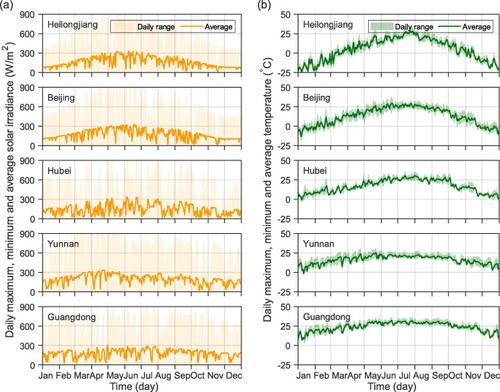当前位置:
X-MOL 学术
›
Energy Convers. Manag.
›
论文详情
Our official English website, www.x-mol.net, welcomes your feedback! (Note: you will need to create a separate account there.)
Can distributed photovoltaic-battery systems power buildings with favorable matching performance and techno-economic feasibility?
Energy Conversion and Management ( IF 10.4 ) Pub Date : 2024-03-16 , DOI: 10.1016/j.enconman.2024.118260 Hao Li , Qi Chen , Tao Zhang , Xiaochen Liu , Xiaohua Liu , Yi Dai , Bowen Guan
Energy Conversion and Management ( IF 10.4 ) Pub Date : 2024-03-16 , DOI: 10.1016/j.enconman.2024.118260 Hao Li , Qi Chen , Tao Zhang , Xiaochen Liu , Xiaohua Liu , Yi Dai , Bowen Guan

|
The widespread adoption of distributed photovoltaic (PV) systems is crucial for achieving a decarbonized future, and distributed energy storages play a vital role in promoting PV energy consumption and easing the grid burden. This study uses actual building electricity consumption data to examine the temporal and dimensional matching performance and economic feasibility of photovoltaic-battery (PVB) systems. When prioritizing nearly self-consumption, there is a knee point in the growth trend where the energy storage demand increases with the ratio of annual PV generation to annual electricity demand (). Before this point, energy storage primarily serves intraday energy transfers. However, once surpasses this point, there is a rapid surge in energy storage demand due to the requirement for cross-season energy transfer. When nearly self-sufficiency is desired, the energy storage demand experiences a rapid decrease to converge to a non-zero value as increases. Comparative analyses reveal that public buildings with concentrated daytime electricity consumption and shopping malls in different climate zones with similar intraday usage patterns show comparable matching performance when equipped with short-term energy storage. However, as high self-consumption or self-sufficiency rates are pursued, variances in their seasonal consumption characteristics lead to significant differences in energy storage demand. From an economic perspective, integrating batteries into a shopping mall in Beijing increases the equivalent electricity price under the prevailing feed-in tariff. In addition, when surplus PV generation export is prohibited or unremunerated, the battery does not enhance the economic feasibility until exceeds 51%, and partial curtailment of PV generation is economical when exceeds 26%. Furthermore, to achieve a high self-sufficiency level, slightly expanding beyond the required self-sufficiency rate can efficiently reduce energy storage demand and improve economic feasibility at the expense of partial curtailment of PV generation.
更新日期:2024-03-16



























 京公网安备 11010802027423号
京公网安备 11010802027423号